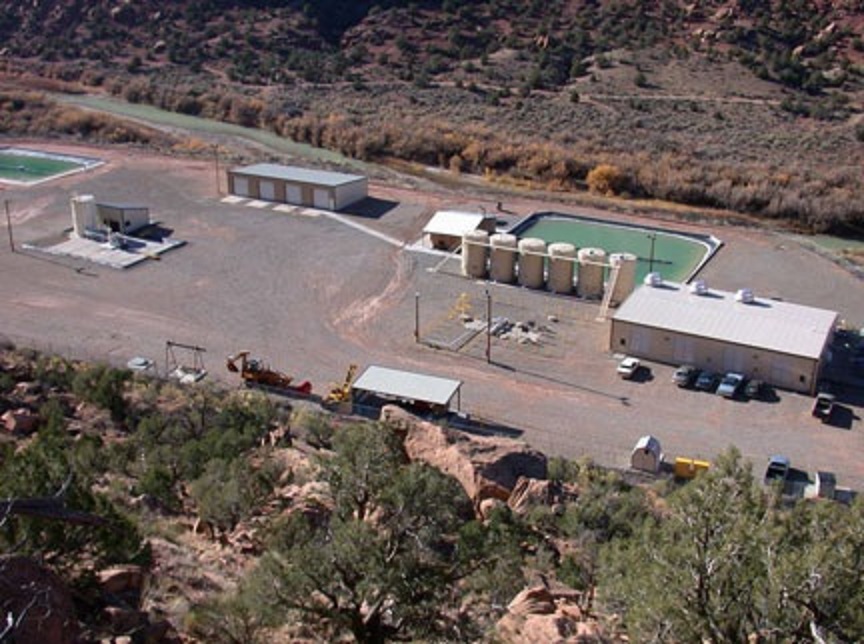The obscure Paradox Valley Unit keeps the Colorado River’s salinity levels in check for farmers, but causes quakes upstream.

Paradox Valley brine injection facility
By Stephen Elliot / High Country News
The Paradox Valley in western Colorado got its name because the Dolores River bisects it, rather than running through it in the normal topographical fashion. The landscape is short on people, long on sagebrush and probably best known for the dramatic red cliffs that loom over travelers making the long drive from Telluride, Colorado, to Moab, Utah. This remote valley was formed millions of years ago, when a huge dome of salt collapsed. Now, that salt remains, buried just within the earth, and as a white, crystalline blanket atop the red soil.
And that’s a problem. The waters of the Dolores pick up that salt and carry it to the Colorado River, where it eventually degrades the water quality for downstream cities and farmers. For about a quarter century, however, an unassuming facility has been tackling this salt. Every minute, in fact, the Paradox Valley Unit sucks nearly 200 gallons of brine, which is seven times saltier than ocean water, from wells here, then shoots it 14,000 feet beneath the earth’s surface, in order to keep it out of the river. It’s perhaps the most critical piece of a massive project designed to keep salt out of the Colorado River, but it’s in trouble. The facility itself is near the end of its lifespan, and there is no obvious replacement. Not only that: The re-injection process can cause earthquakes.
Read more at High Country News